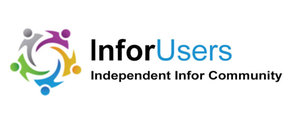The Problem: Legacy Architectures and Proprietary Data Sets Can Impede Innovation
Those of us who have been in the healthcare IT business for several decades can attest to the fierce competitive environment that exists between vendors in the same market segment. Historically, Epic and Cerner are the most recognized competitors in the enterprise healthcare IT market. These two vendors have disparate architectures and data sets that drive two different approaches for data interoperability. The Sequoia Project (i.e., CareQuality) was supported by Epic, while CommonWell Health Alliance was supported by Cerner. Having two approaches and an initial reluctance by Epic and Cerner to support what they perceived as a competitive solution resulted in too many debates around the interoperability approaches. That wasted time and effort slowed healthcare IT professionals’ implementation of viable and long-term solutions. These two interoperability groups agreed to cooperate in 2016[1], most likely in order to avoid interoperability regulations from CMS. They had limited success.
The biggest challenge for most of the application collaboration between healthcare IT legacy vendors is the variations in the solution architectures. There is no plug-and-play capability for most legacy solutions to extend their application capabilities, though this will eventually be overcome by the HL7 Fast Healthcare Interoperable Resource (FHIR)[2] API models that are emerging. This will not be a near-term event since the vendors continue to haggle over how to implement the FHIR standards to deliver the data needed by the providers and patients. As Pogo the opossum once said, “We have met the enemy and he is us.”
The Solution: New Digital Solutions Drive Collaboration and Competition
The emerging digital healthcare application vendors are providing insights into how this market will cooperate and collaborate to deliver solutions needed by providers and patients. A recent example is the announcement of a COVID-19 tool kit created by Rx.Health[3] that includes digital application components from Redox with supports for sharing patient records. Other examples include Suki, a voice recognition digital assistant used to create physician documentation, and Curai Health, which provides an AI solution to evaluate patient information and render a diagnosis.
There is also the collaboration between Amazon/Transcribe Medical, Cerner, and Suki for creating an effective voice recognition digital documentation solution for physicians[4]. It is interesting to note that Suki appears to be a “super collaborator” with several alliances and provides examples of digital competition and cooperation.
The ability for vendors to quickly react to market changes and needs will determine their long-term viability, and that is not lost on the enterprise vendors. Both Epic[5] and Cerner[6] have developed app stores to enable digital applications developed by other vendors or clients to be accessed by all of their customers. Providing digital application interoperability with the enterprise software platforms provides a strategy for anchoring clients to the vendors’ solutions for a long time.
The ability to quickly combine digital application capabilities between products to address healthcare needs, especially national needs, portends a future for healthcare IT that drives innovations to help reduce healthcare costs while improving outcomes and quality in a matter of months instead of years.
The Justification: Digital App Collaborations Support Effective Healthcare Delivery Transformations
Not since the Tax Equity and Fiscal Responsibility Act of 1982, which introduced DRGs for reimbursement coding, has healthcare been in such a dynamic environment. Today, healthcare is being driven to reduce costs and improve quality outcomes with initial programs from CMS (e.g., Alternative Payment Models[7]). The failure by providers and payers to drive down costs is now creating pressure by citizens and progressive politicians to initiate government-controlled healthcare. The COVID-19 threat is further driving the need to create innovative provider and patient healthcare solutions. The capability to quickly stitch together digital application components from different vendors in order to address critical healthcare delivery needs provides a new frontier for healthcare IT solutions.
The Players: Plug-and-Play Collaboration Emerges
The key to successful digital application collaboration is to create a solution that appears seamless to the end user via API coupling or intuitive navigation between the applications. Representative vendors that appear to meet those objectives include:
- Suki – AI-powered, voice-enabled digital assistant for doctors.
- Redox – Vendor and provider health data exchange.
- Curai Health – Physician chatbot assisting with patient diagnosis.
- Rx.Health – Provider of digital apps, chatbots, and front door and digital navigation programs with the EHR.
Success Factors
- Provide a review and feedback session by clinicians for the evaluation of collaborative digital solutions to support quick and wide adoption for supporting healthcare delivery needs.
- Ensure that digital solutions created from multiple vendor applications are tightly coupled to support efficient workflows and data streams to address the provider and/or patient needs.
- Evaluate all of the components of digital solutions created from multiple apps by reviewing the app stores of the enterprise vendors. Inclusion of these solutions into app stores designates a level of review and testing by the enterprise vendors.
Summary
The ability to tightly couple digital applications that address different healthcare delivery needs will dramatically alter the time it takes to deliver effective market solutions to providers and patients. Creating solutions from vendors that provide unique AI, voice recognition, workflow, telehealth, scheduling, EDI, RPA, and EHR interoperability in combination with these functions provides an incredible ability to deliver timely and effective products to support the dynamic healthcare market. This is a critical need as identified by the industry’s reaction to the COVID-19 impact on our healthcare delivery system.
The question that arises is whether a group of tightly coupled digital applications can be built to eventually replace legacy enterprise solutions. Are we witnessing the emergence of an entirely new approach for creating enterprise applications? Can a digital application environment be created that is less costly and more flexible than current enterprise solutions? Are we moving to a plug-and-play digital solution environment that meets the expectations of clinicians and patients while delivering lower cost solutions? To quote Dr. Seuss, “It’s not about what it is, it’s about what it can become.”
[1] https://www.commonwellalliance.org/news-center/commonwell-news/carequality-commonwell-health-alliance-collaboration/
[2] https://www.hl7.org/fhir/
[3] https://medcitynews.com/2020/03/mt-sinai-spinoff-creates-covid-19-toolkit-for-hospitals/
[4] https://www.healthcaredive.com/news/amazons-new-medical-transcription-service-bolsters-voice-to-text-bid/568245/
[5] https://apporchard.epic.com/
[6] https://code.cerner.com/apps
[7] https://qpp.cms.gov/apms/overview
Photo credit: Adobe Stock, marina_ua


